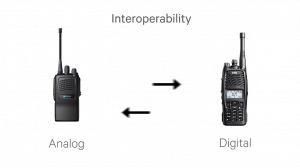Introduction to P25
P25 Standard
What is P25?
This course is taught by Andrew McTaggart, a Customer Support Engineering Specialist at Tait Communications. Prior to that, he was a product trainer on P25 digital radio communications equipment.
In this topic, we’ll introduce the P25 standard. P25, or Project 25, is a suite of standards developed to provide digital voice and data communication systems suited to public safety and first responders. Project 25 was initiated by the Association of Public Safety Communications Officials, or APCO. APCO International is the world’s oldest and largest organization of public safety communications professionals.
Since 1935, APCO International have run a series of projects aimed at solving unique problems telecommunications professionals encounter. Project 25 concerns the development of a standard for digital radio equipment embracing the public safety-focused features of interoperability, spectrum efficiency, and cost economies.
An important feature of P25 is that the development is user-driven. The needs of public safety professionals are paramount. Project 25 is not finished. The standards are constantly being enhanced and refined as new requirements are identified.
Another key aspect of P25 is the importance of migration strategies and backwards compatibility with existing equipment. Digital P25 radios even include an analog mode of operation that is compatible with existing FM radio equipment.
The Telecommunications Industry Association, or TIA, formulates and maintains the TIA-102 series of standards for APCO P25, on behalf of APCO International.
The Project 25 standards enable interoperability among multiple manufacturers of P25 products. This results in a greater range of products, both mobile and portable radios used by front line staff and also the network equipment, stored on hilltops and in dispatch centers.
Multiple manufacturers allow for price competition, both during the initial tender for a new radio system and throughout the life of the system as it’s expanded and maintained. It also allows for different agencies to communicate together, even if they’ve purchased their P25 equipment from different vendors.
 Radio Academy
Radio Academy







